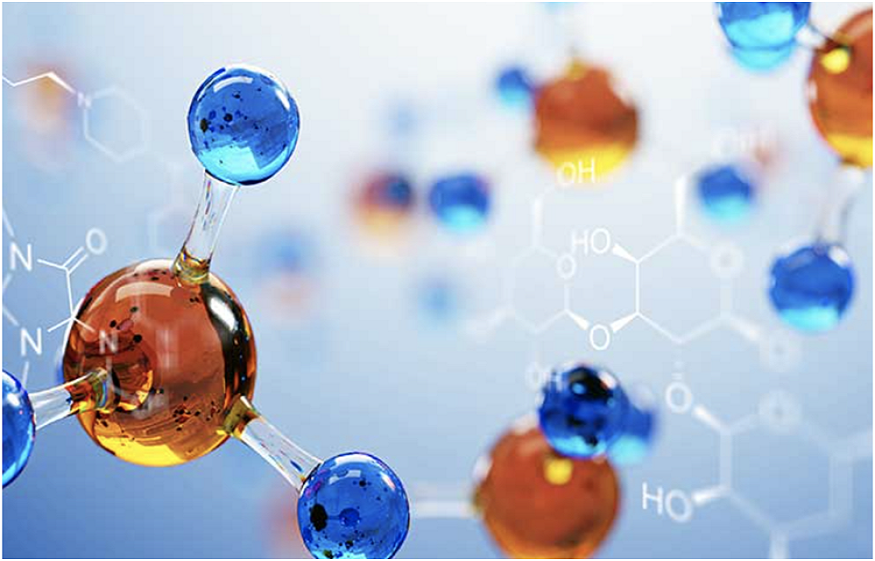With the rapid increase in bioinformatics knowledge about peptides, peptide-based drug design, a lot of attention has been paid to this approach. Peptide-based drugs have not been widely used in the past due to limitations like low selectivity or rapid degradation of peptides within biological systems. Recent developments in peptide-based therapies have been exciting, with excellent anti-tumor efficacy. Many new peptide-based therapeutic drugs are being developed and will be a promising class of anti-tumor drugs. This blog will provide a brief overview of anti-tumor drugs based on the peptide form.
1. Immunotherapy for cancer with peptide drugs
Peptide drugs are a hot research area for the treatment of cancer. PD-L1 is often overexpressed in cancer cells. When it binds with PD-1 expressing T cells on activated cells, cancer cells can escape the immune response. Inhibiting PD-1/PD-L1 interaction may be a way to treat tumors with immunotherapy. Studies have shown that D-PPA, a hydrophilic D type peptide (DPPA), does not cause cytotoxicity. It can block the PD-1/PD-L1 interaction and inhibit tumor growth in CT26-bearing mice. This can also prolong their lives.
The immune cells called macrophages play a crucial role in both acquired and innate immunity. The survival and differentiation of macrophages is affected by the CSF-1/CSF-1R pathway. Experimental results showed that M2pep and CSF-1R siRNA could co-encapsulate M2 TAM and remodel into the M1 phenotype, increasing anti-tumor immunity response.
2. Peptide drugs that target Apoptosis
Some peptides may induce cancer cell death. An anticancer peptide, RA-V (deoxybouvardin), can cause mitochondrial apoptosis and loss of mitochondrial function in cancer cells. Another pentapeptide, Dolastatin10, can induce apoptosis through up-regulation of cytochrome C, and Bax.
KLA (KLAKLAKLAK), which is also a pro-apoptotic protein, induces programmed cell deaths by disrupting mitochondrial membrane. KLA peptides are used in bioconjugates. KLA can be used to bind to the tumor-homing peptide (CRGDKGPDC), to increase the permeability to tumor cells and tissues. In mouse models, the potent anti-tumor effects of the recombinant KLA/IRGd conjugate have been shown. These studies could lead to the development and testing of targeted PDCS.
The penetratin, a cell-penetrating protein peptide-KLA conjugate, is another example of a KLA based therapy. Penetratin was linked with KLA peptides through disulfide bonds to overcome low cell permeability. This resulted in high cellular permeability and cytotoxicity even at low levels. Penetratin-KLA conjugate is not known to have any effect on normal cell mitochondria, which shows its potential for therapeutic use as a novel peptide combination.
3. Peptides for tumor enhancement
New studies have also described new methods for targeting tumors using peptides. It was revealed that ALOS-4, a S-S-bridged-cyclic peptide (ALOS-4), is specifically for the integrin AVB3, which is high in metastatic melanoma. ALOS-4 was used in this study to be coupled with topoisomerase I inhibitor Camptothecin. The conjugate showed potent anti-tumor activity against metastatic melanoma human cells but low toxicity to normal tissues. A research team also combined the four-branched, branched peptides NT4 and paclitaxel. NT4 peptides are able to selectively bind tumor membrane glycosaminoglycans sulfate. Combining it with paclitaxel makes it more selective for cancer cells. This combination gives it greater anti-tumor activity.
Another study examined the tumor targeting of albumin binding peptides. In vitro Studies showed that the bioconjugation DICLPRWGCLW into a stable albumin complex could play a role for tumor targeting. This also demonstrated high tumor targeting and significantly higher half-life in the SCC7 mouse model. Albumin binding, based on the positive correlation between tumor growth and albumin uptake, is expected to be a new therapeutic strategy to target tumor tissues.
4. Combination of peptide drugs with small cytotoxic medications
Combining cytotoxic drugs and other therapeutic agents with peptides can lead to the development of peptide-based therapeutic compounds.
Numerous studies have demonstrated that cytotoxic drugs can be bound to peptides having additional functions. One example of this is platinum-based, cisplatin chemotherapy, which is one of the most popular cancer treatments. Cisplatin resistance means that long-term cisplatin use in patients can reduce its effectiveness. Peptides may be a good option to address drug resistance. When cisplatin is combined with peptides, the binding induces a high accumulation of cisplatin in tumors and metastasis-containing organs and significantly reduces the systemic toxicity of cisplatin.
For the treatment of refractory cancers, several peptide-drug conjugations are under clinical investigation. FDA approved Melflufen as the first peptide-coupled medication for multiple myeloma on February 27, 2021. Targeted cancer cells can easily ingest melflufen because it is very lipophilic. Melflufen molecules can be cleaved using aminopeptidase. This enzyme is expressed in many myeloma cells and releases toxic chemicals that alkylate tumor cells and cause DNA damage. Many other forms of peptide drug conjugates are currently in active development.
Creative Peptides’ Perspectives
Peptide drugs, or peptide drug-drug combinations, have been extensively studied for new drug R&D. They are being reborn as new therapeutic options. Researchers have begun to understand the limitations of peptide drugs and are now able to draw attention to the powerful anti-tumor effects of peptides. Many therapeutic strategies that combine cytotoxic antitumor drugs with functional peptides have become a reality. They are expected to be more efficient than small-molecule drugs and antibodies.
Well, look no further. Click Here to learn more.
You may also like
-
Can PCOS Cause Irregular Periods And Hormonal Imbalance?
-
WHAT ARE CANADIAN GOOSE CIGARETTES?
-
Comprehensive Physician Liaison Training and Professional Development Programs
-
Saving Lives in the Sky: The Technology Behind Air Medical Equipment
-
TAKING CHARGE OF YOUR HEALTH: THE IMPORTANCE OF A FULL BODY CHECKUP

